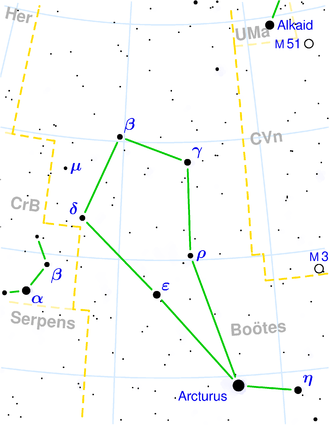NGC 5603
| Galaxy NGC 5603 |
|
|---|---|

|
|
| SDSS recording | |
| AladinLite | |
| Constellation | Bear keeper |
|
Position equinox : J2000.0 , epoch : J2000.0 |
|
| Right ascension | 14 h 23 m 01.5 s |
| declination | + 40 ° 22 ′ 39 ″ |
| Appearance | |
| Morphological type | S0 / LINER |
| Brightness (visual) | 13.0 likes |
| Brightness (B-band) | 14.0 mag |
| Angular expansion | 1.1 ′ × 1.1 ′ |
| Surface brightness | 13.0 mag / arcmin² |
| Physical data | |
| Redshift | 0.018893 ± 0.000067 |
| Radial velocity | 5664 ± 20 km / s |
|
Stroke distance v rad / H 0 |
(257 ± 18) x 10 6 ly (78.9 ± 5.5) Mpc |
| history | |
| discovery | Wilhelm Herschel |
| Discovery date | April 29, 1788 |
| Catalog names | |
| NGC 5603 • 5603A • UGC 9217 • PGC 51382 • CGCG 220-011 • MCG + 07-30-008 • IRAS 14210 + 4036 • 2MASX J14230151 + 4022382 • GC 3871 • H III 734 • h 1800 • GALEX ASC J142301.53 + 402238.9 • HOLM 641A • LDCE 1055 NED002 | |
NGC 5603 (also NGC 5603A ) is a 13.0 may bright Lenticular galaxy with active galaxies core from the Hubble type S0 in the constellation Bootes the northern sky . It is an estimated 257 million light years from the Milky Way and about 80,000 light years in diameter. Together with the non-NGC object PGC 51372 (also NGC 5603B ) it forms the gravitationally bound galaxy pair Holm 641 .
In the same area of the sky are u. a. the galaxies NGC 5582 , NGC 5598 , NGC 5601 .
The object was discovered on April 29, 1788 by Wilhelm Herschel with an 18.7-inch reflector telescope, who described it as "cF, pS".
